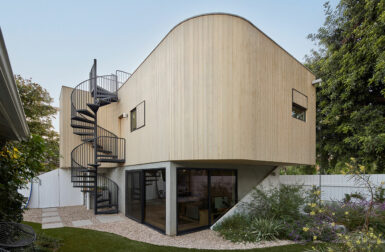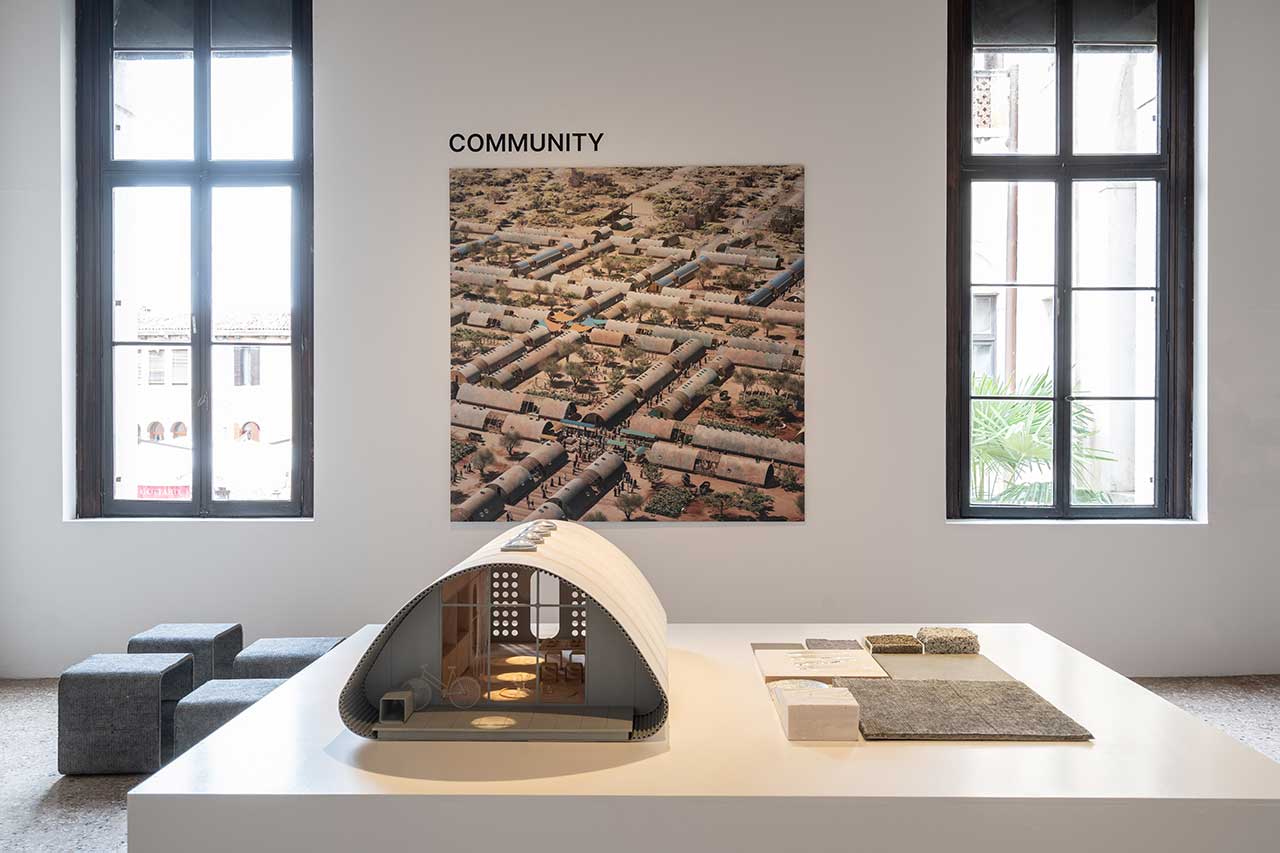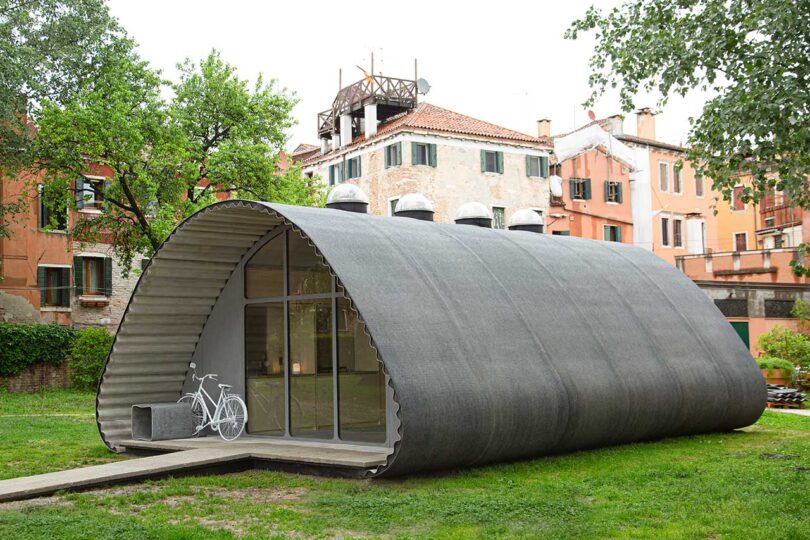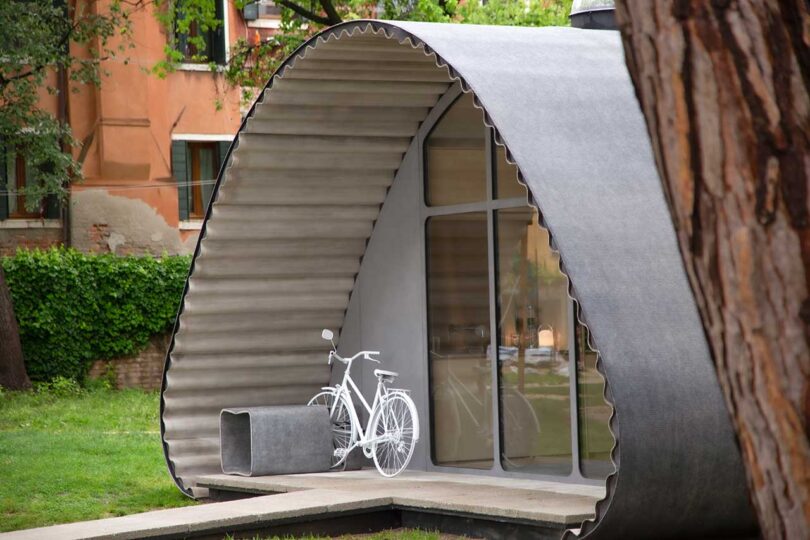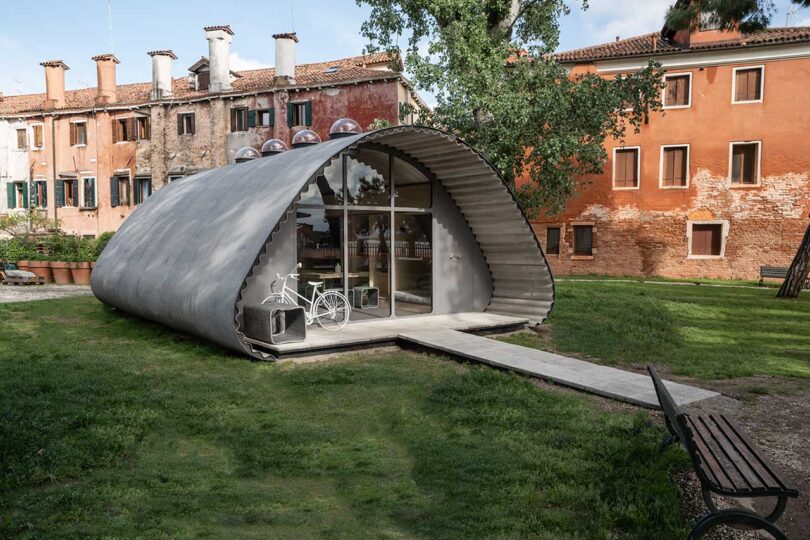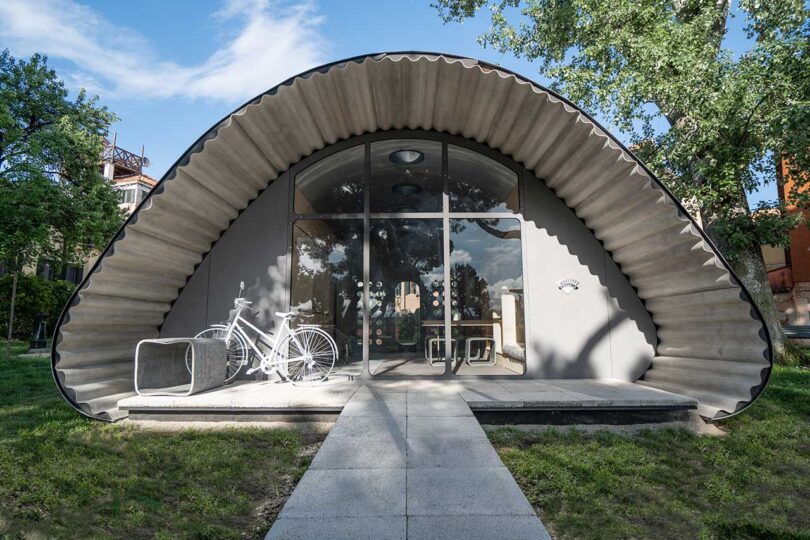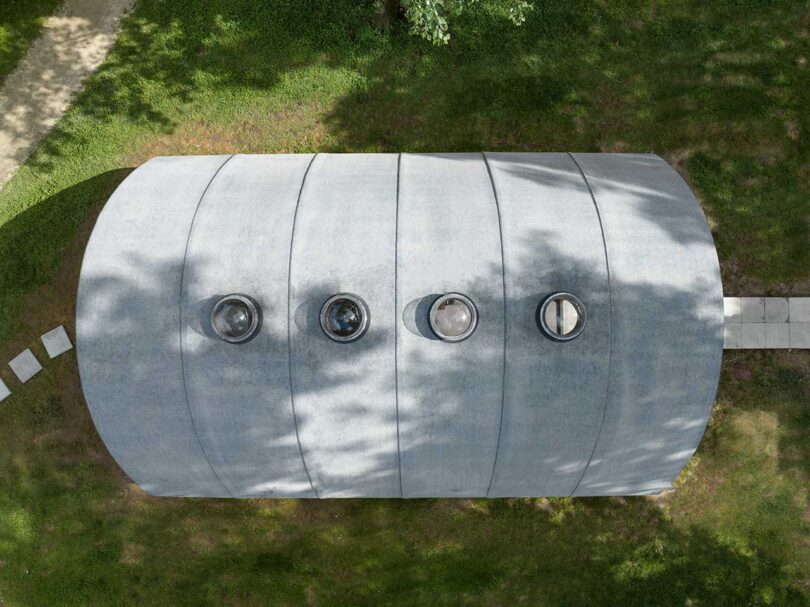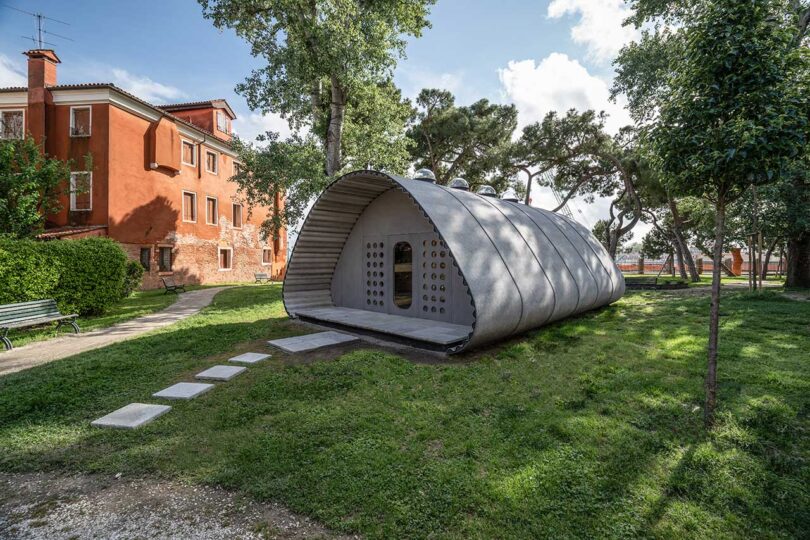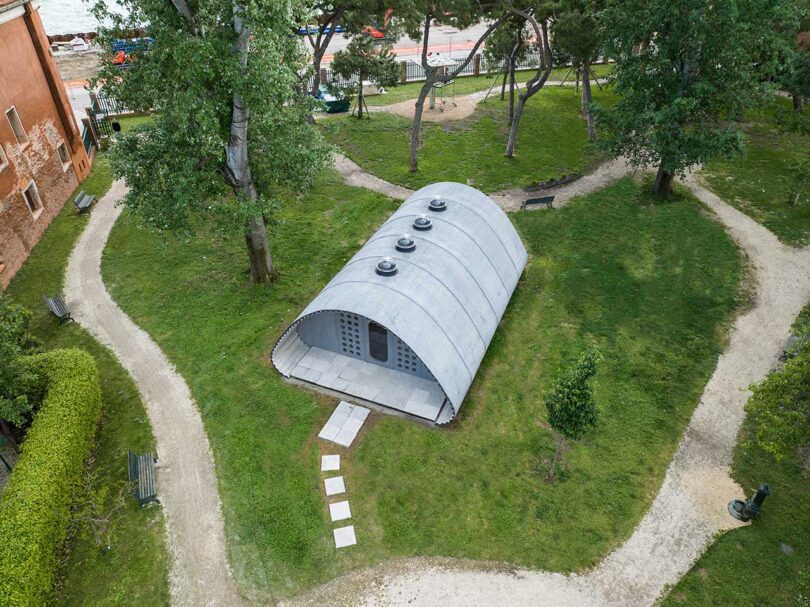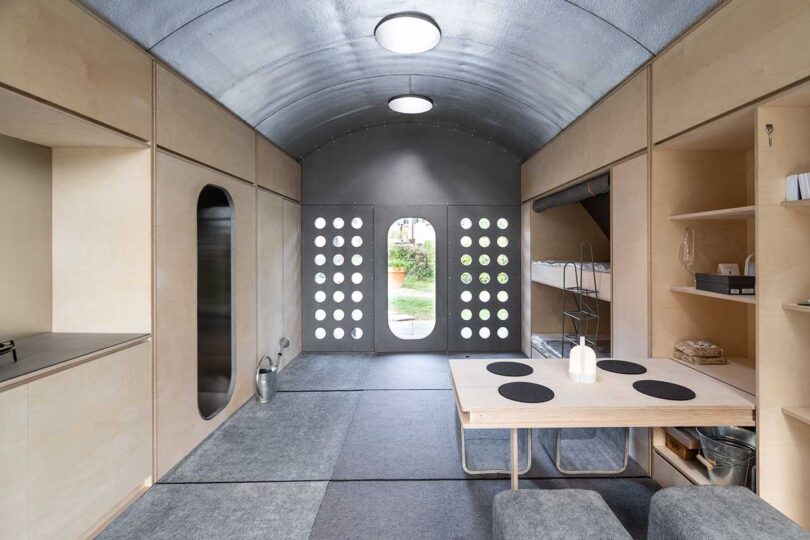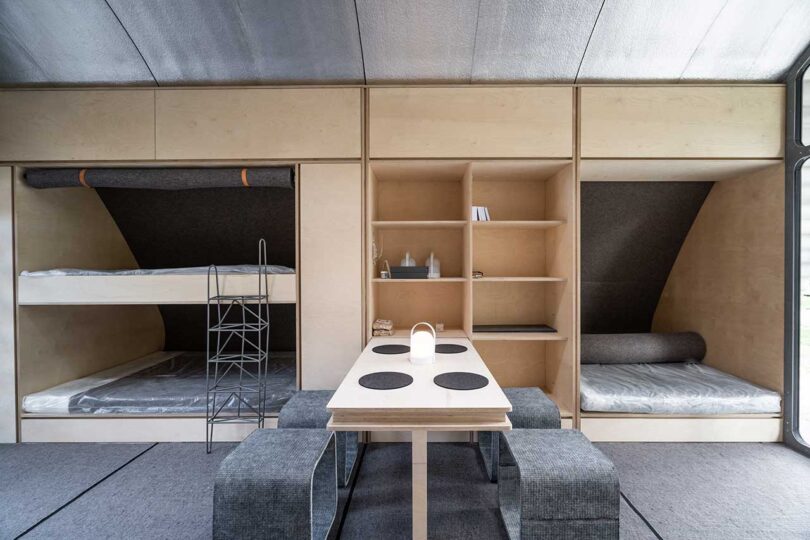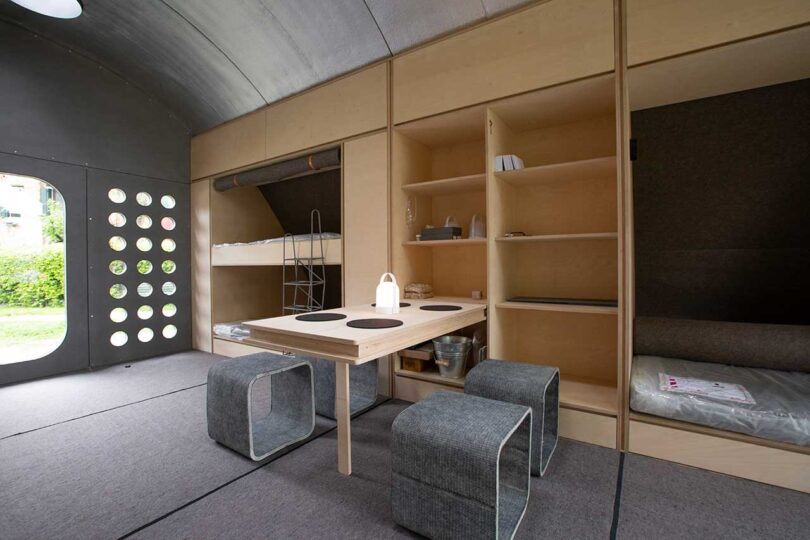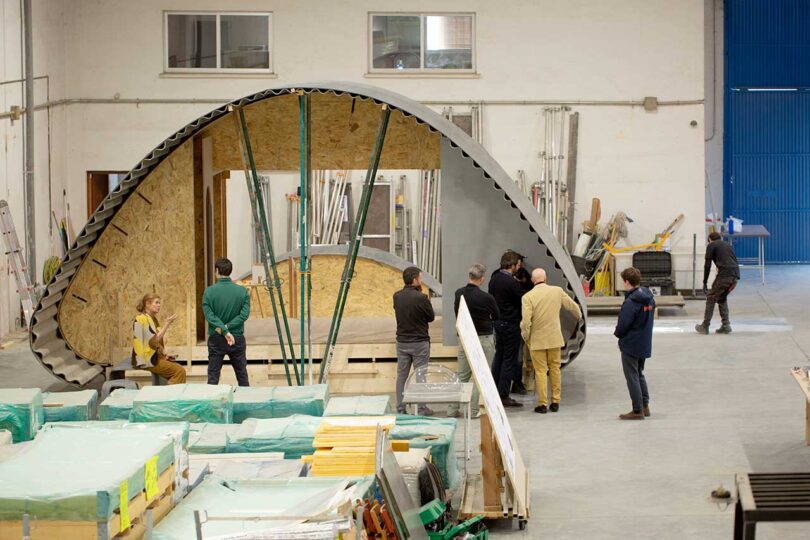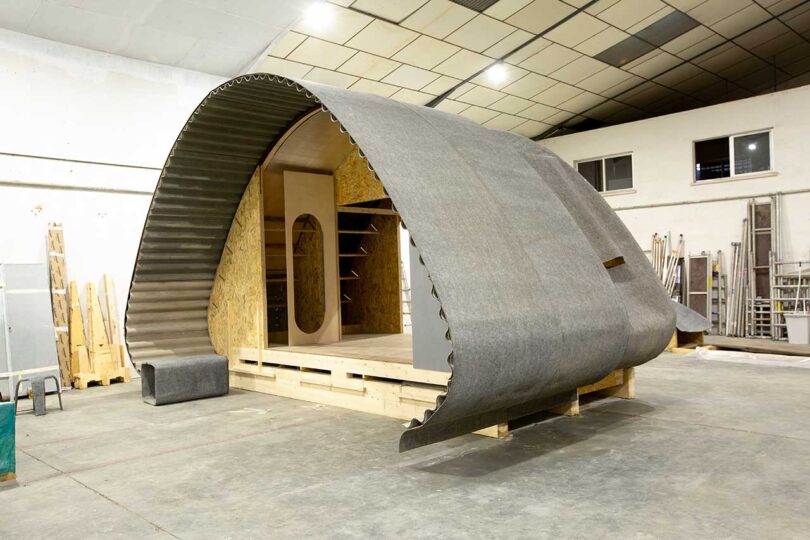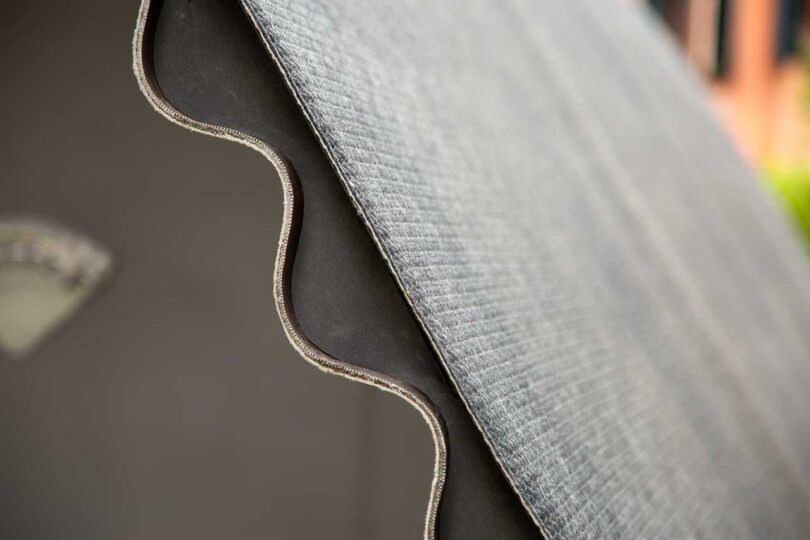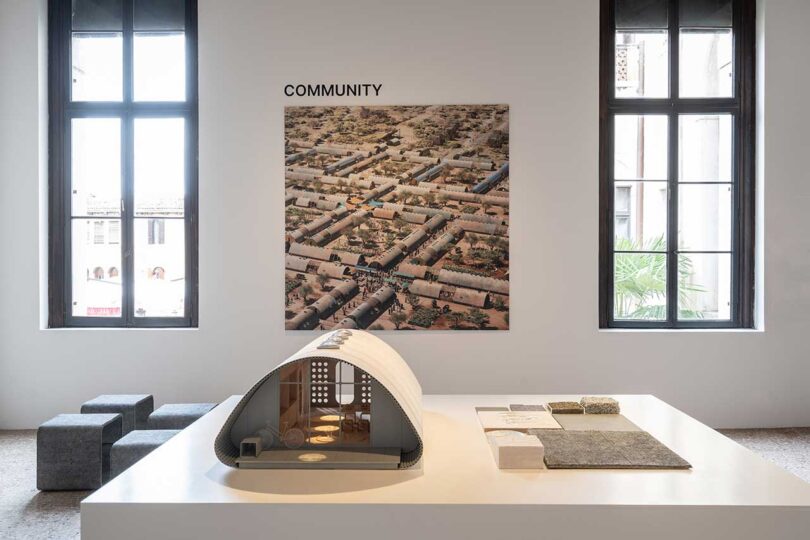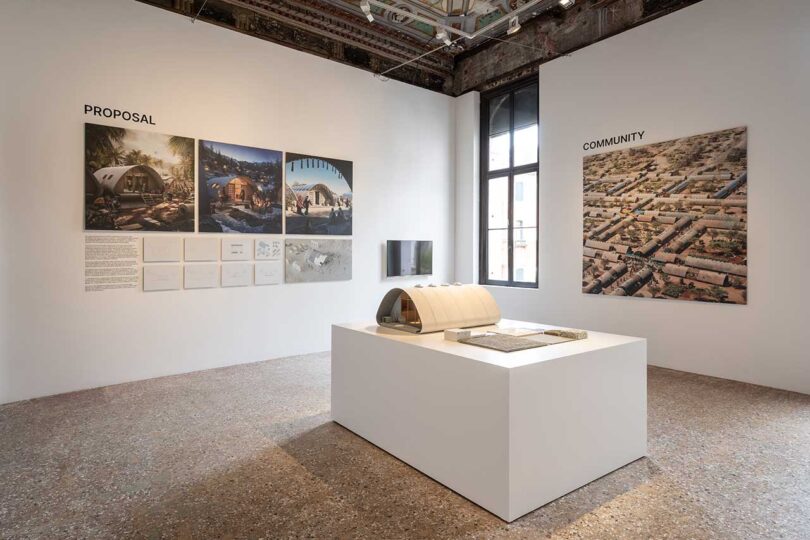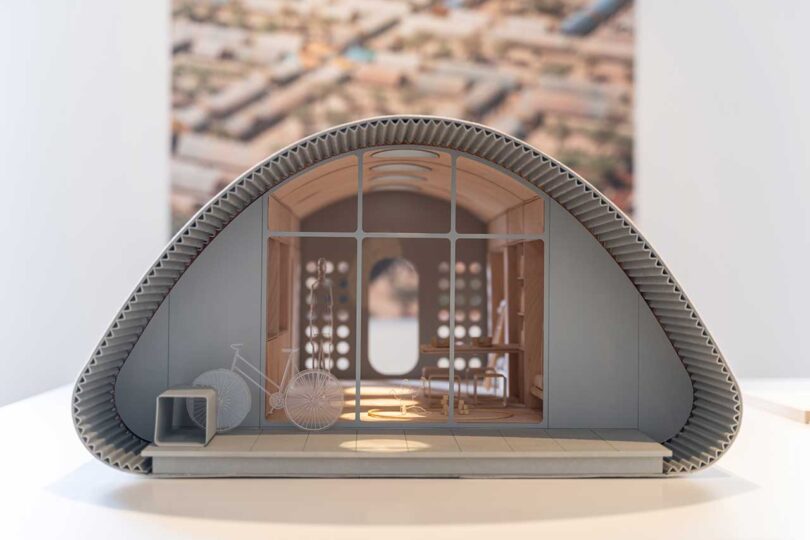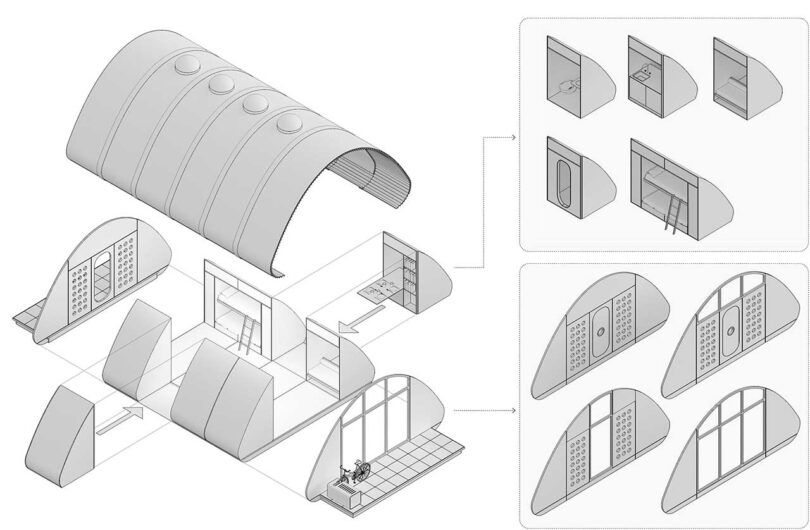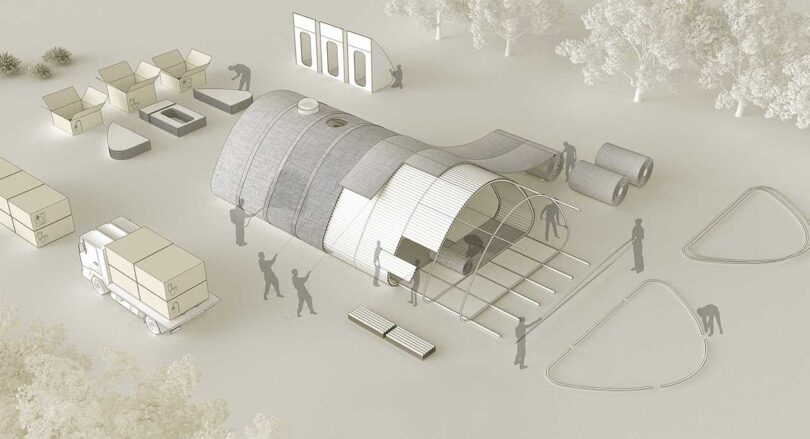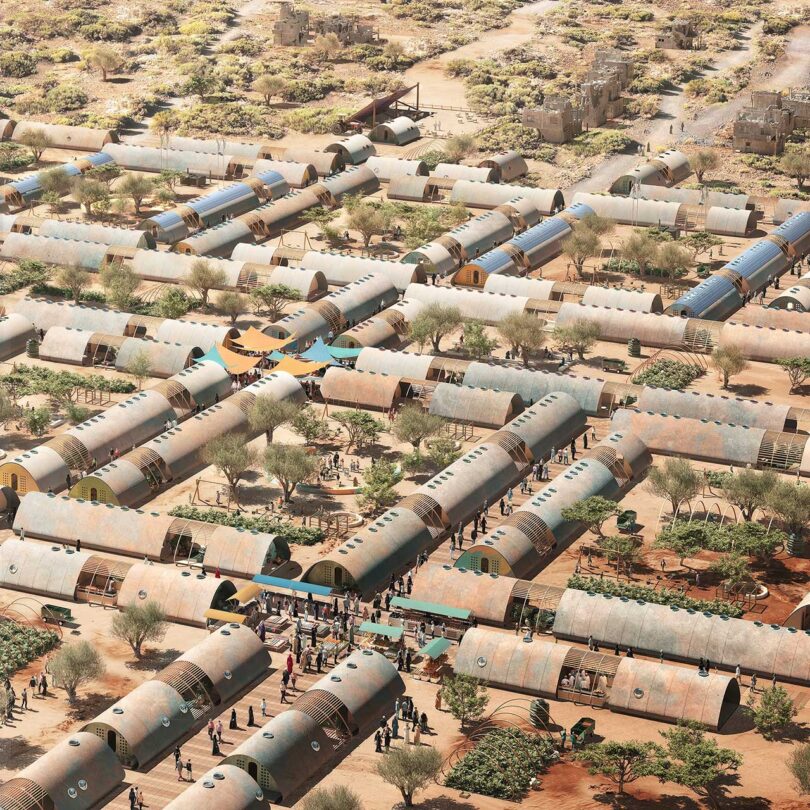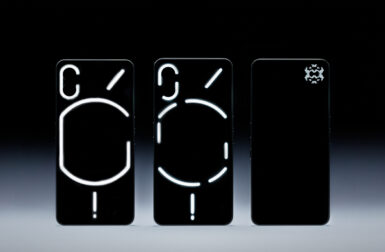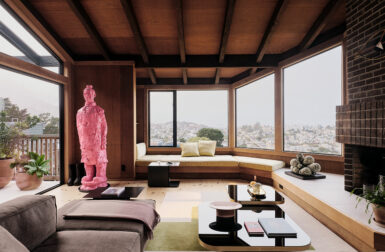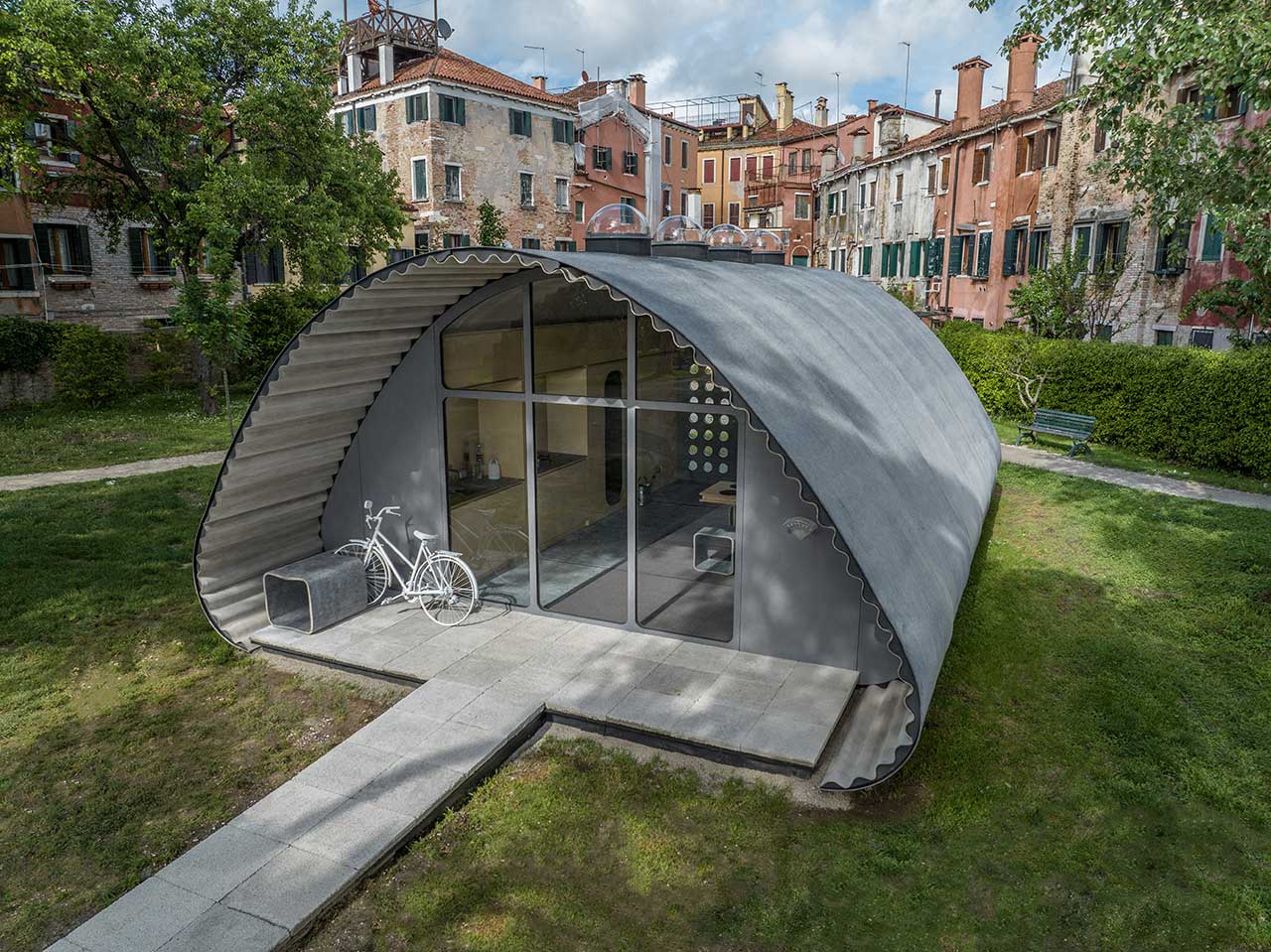
While Pritzker Prize–winning architect Sir Norman Foster, founder of global Foster + Partners architecture firm, is typically known for his unique structures around the world, he also lends his time and skills to much smaller projects. As president of the Norman Foster Foundation, he partnered with Holcim to design a housing concept aimed to meet essential human needs, such as safety, comfort, and wellbeing for people in displaced communities. The Essential Homes Research Project just unveiled its prototype that’s built utilizing Holcim’s sustainable building practices to make it low-carbon, energy-efficient, and circular. The model is on view in Venice, Italy during the 2023 Biennale of Architecture until November 2023.
Norman Foster says: “How can we ensure everyone, including some of our world’s most vulnerable populations, can have access to decent living conditions? During the Venice Biennale we show our work-in-progress on this idea; the outcome of a few months of intensive activity in collaboration with Holcim.”
The Essential Homes Research Project prototype proves that emergency housing can be sustainable with a 70% lower CO2 footprint, compared to traditional builds. The structure’s external shell is made from low-carbon, rollable concrete sheets that offer physical safety. The unit is outfitted with energy-efficient insulation systems, including Elevate boards and low-carbon Airium foam for thermal and acoustic comfort. To ensure the unit is more weather resistant, the base is made from Holcim’s ECOCycle®, which are recycled construction demo materials.
Jan Jenisch, Chairman & CEO of Holcim says: “I am very excited about the potential for impact coming out of this collaboration. It enables essential homes that are built with some of our low carbon, energy- efficient and circular building solutions, showcasing how sustainable building can be possible for all.”
When multiple units are placed together in a village, they can be connected with paths made from ECOPact concrete with light-absorbing aggregates that reflect natural light at night for added safety.
At the end of their life, each of the module’s components can be reused or recycled.
For more information about the Essential Homes Research Project, visit holcim.com.
Photography by Chiara Becattini and Mika Cartier.
